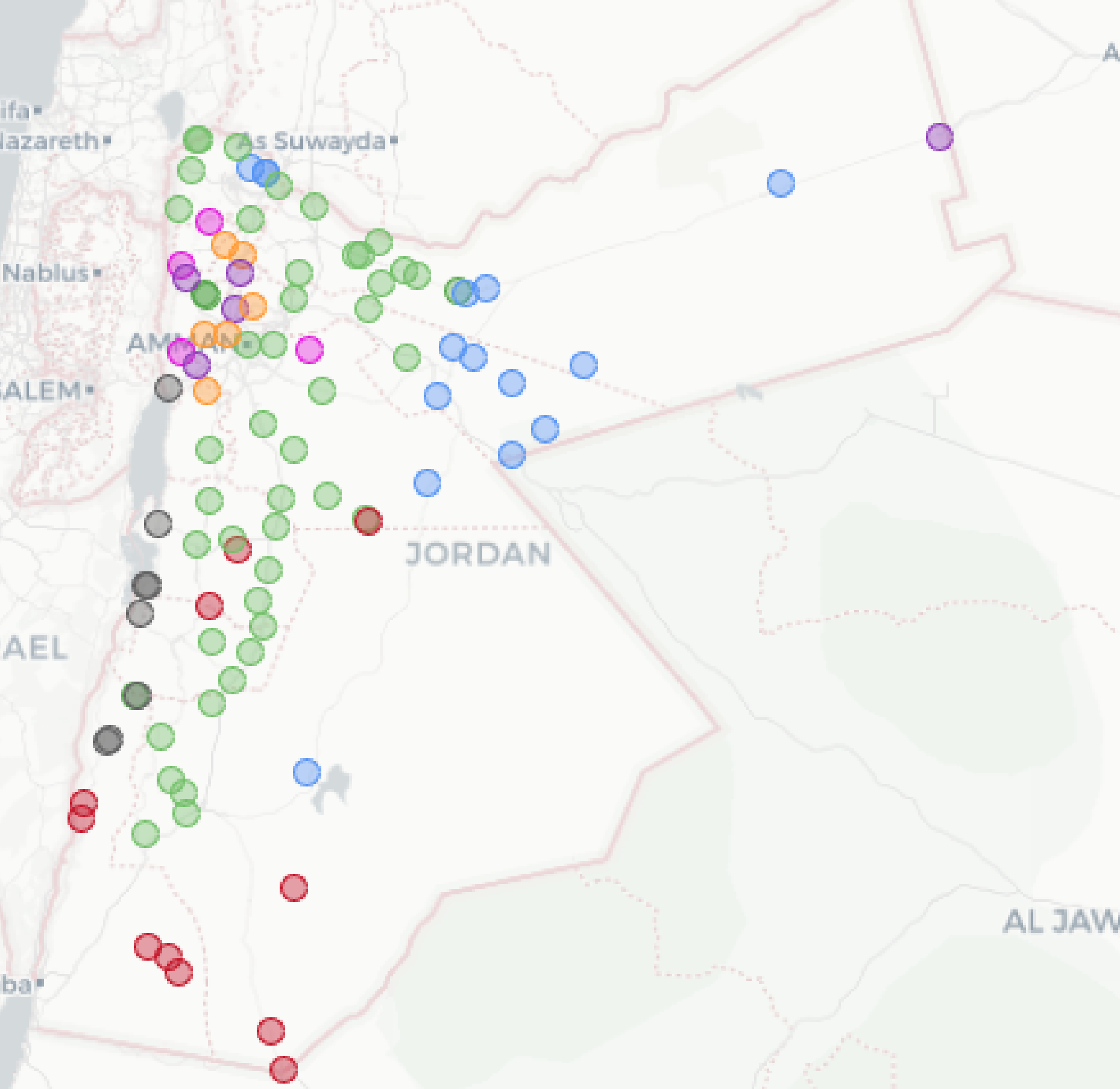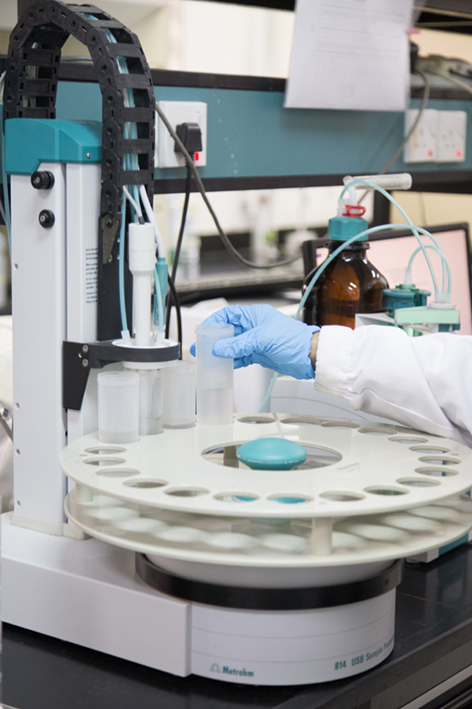Please read the following considerations before accessing the AGS results
In order to monitor the trends in groundwater quality evolution, BGR and WAJ established an Annual Groundwater Sampling, which is conducted every year on the same set of monitoring locations throughout Jordan. This monitoring dashboard visualizes groundwater quality data, collected in the scope of the Annual Groundwater Sampling (AGS), which is conducted by the laboratory of the Water Authority of Jordan (WAJ) in cooperation with the Federal Institute for Geosciences and Resources (BGR) of Germany to facilitate assessment and reporting. It is meant to inform the general public and to serve as a unifying platform for various stakeholders, encouraging communication and collaboration on water quality concerns.
AGS Locations
The AGS-locations were selected by a team of experts from
WAJ and BGR to represent the different aquifers in the different areas of the
countries.
The sampling locations represent governmental and private wells as well as natural
springs
and are sampled every year.
Due to the mixing of waters from different aquifers inside the well, however, it is
not
always possible to assign a sample to 100 % to one specific aquifer.
When a well or spring can falls dry or is (temporarily or permanently) out of
service,
it is replaced by a substitute sampling location to represent the same aquifer in
the same
area.

Concentrations in the Dashboard
The measured concentrations are compared to the limits of the Jordanian
Drinking Water Standard (JSMO JS 286:20185):
- Alarming concentrations (higher than allowed by the Ministry of Health) are indicated by red circles.
- Critical concentrations (to be approved by the Ministry of Health) are indicated as orange circles.
- Elevated concentrations (higher than 1/2 of the JDWS limit; for TDS lower than 850 mg/l) are indicated as purple circles.
- Unproblematic concentrations (lower than 1/2 of the JDWS limit; for TDS lower than 850 mg/l) are indicated as blue circles.

Please consider!
Not all of the displayed sampling locations serve for drinking water purposes!
Agricultural or
industrial wells
follow different water quality specifications.
- The maps do not show tap water quality! Tap water is usually mixed from different sources to achieve the desired water quality.
- The maps focus on inorganic hydrochemistry and do not show other important parameters for human consumption such as microbiology or organic compounds.
- The maps therefore do not indicate the overall drinking water quality in a region. Instead, they highlight areas of concern in regards to specific inorganic parameters.